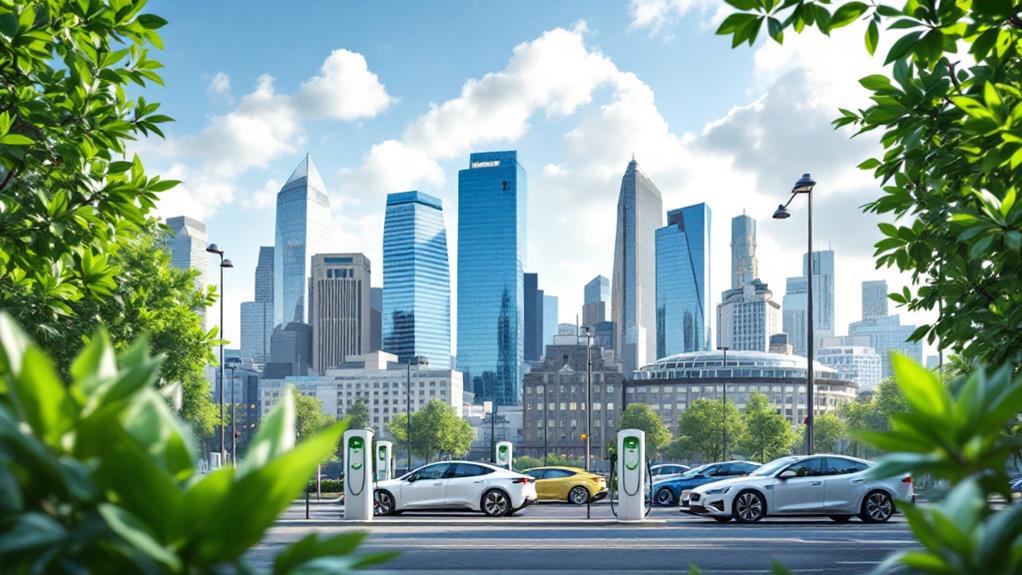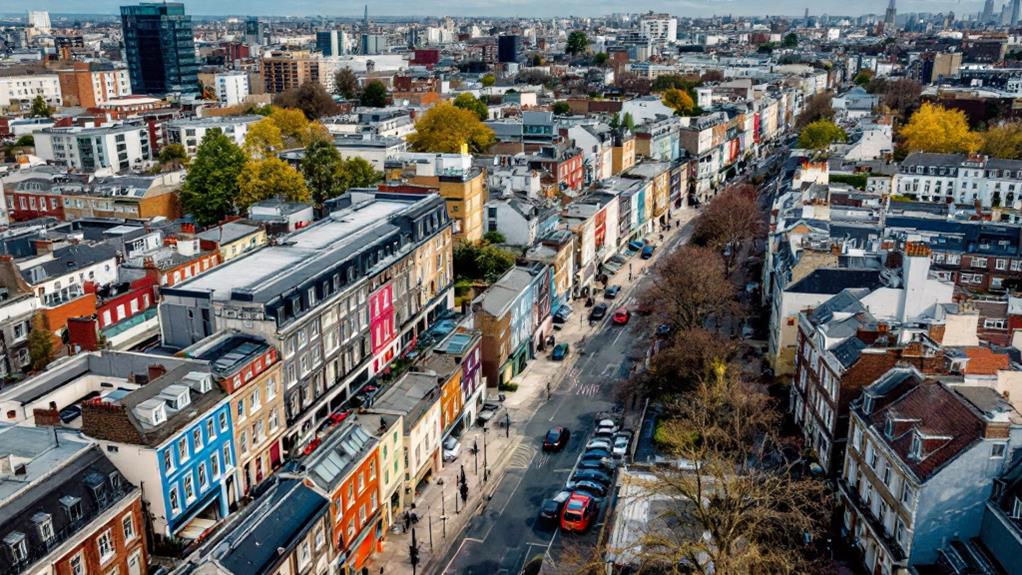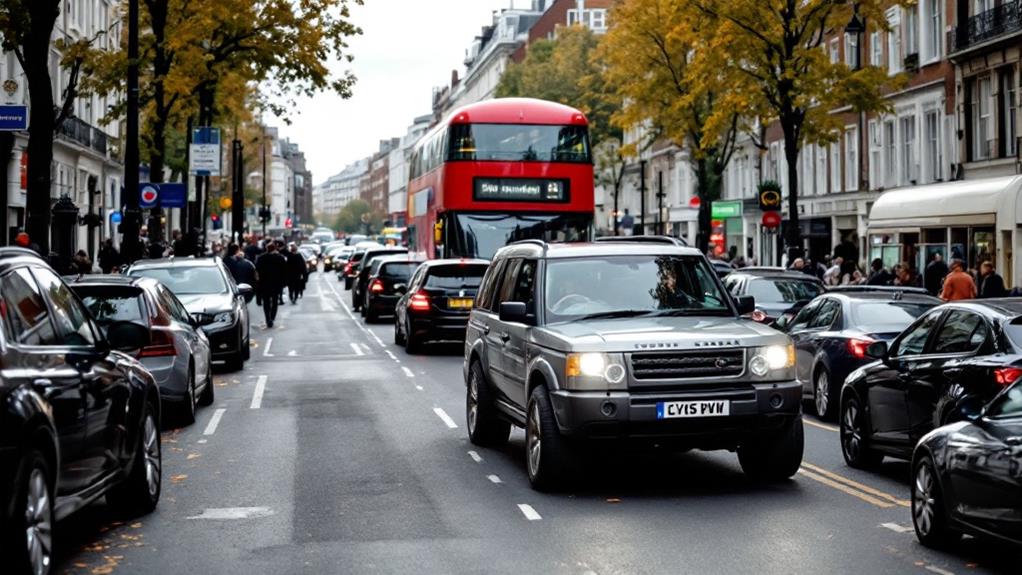Parking Challenges Near London's Major Tourist Attractions
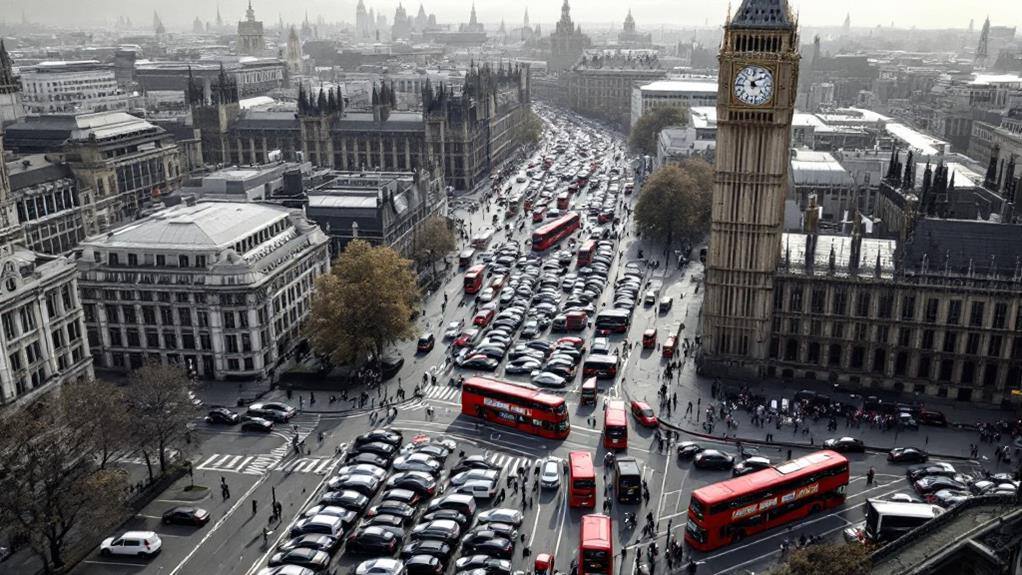
When you visit London's major tourist attractions, you'll face a parking predicament that can turn your sightseeing expedition into a frustrating ordeal. Spaces near iconic sites are scarce and expensive, with hourly rates reaching £30 in some areas. You'll need to navigate congestion charge zones, time restrictions, and permit requirements. Central London's parking costs are 25-35% higher than other major cities, quickly impacting your budget. While alternatives like public transport and bike-sharing exist, they may not suit everyone's needs. To make the most of your visit, you'll want to investigate smart solutions and future plans for tourist parking.
Iconic Sites, Limited Spaces
Flanking London's most iconic landmarks, parking spaces are as rare as hen's teeth. You'll find that navigating Central London parking is a challenge, especially when visiting famous attractions like Big Ben, the Tower of London, and Buckingham Palace. These sites, while magnificent, offer severely limited parking options nearby.
Even if you manage to spot a vacant space, you'll likely face fierce competition from other tourists and locals alike. The situation becomes even more frustrating during peak seasons when parking facilities near popular destinations like the London Eye and the British Museum are often at full capacity.
If you're planning to visit Westminster Abbey or the National Gallery, brace yourself for steep parking fees. Nearby garages can charge up to £50 per day, adding a significant cost to your sightseeing journey. Tour buses and coaches face their own set of challenges, struggling to find suitable loading and unloading zones near attractions such as the Tate Modern and the Science Museum.
The scarcity of designated parking for tourist vehicles not only increases the risk of fines and penalties but also impacts your overall experience of exploring London's treasures.
High Costs of Central London Parking
Beyond the scarcity of spaces, you'll face another formidable challenge when parking in central London: the eye-watering costs. Central London boasts some of the world's most expensive parking, with hourly rates in certain garages surpassing £30. You'll find parking costs in the city center and West End to be 25-35% higher than in other major global cities like Zurich, Hong Kong, Tokyo, and Rome.
These exorbitant prices stem from limited parking availability, sky-high real estate values, and the affluent demographics in financial and retail districts. While the steep costs may discourage car usage and contribute to reduced traffic congestion and air pollution, they pose significant challenges for you if you're visiting London's major tourist attractions.
As you plan your trip, be prepared for the financial impact of parking expenses. The high costs can quickly eat into your budget, especially if you're spending extended periods exploring the city's iconic sites. Consider alternative transportation options or carefully research more affordable parking solutions to mitigate the impact of London's expensive parking on your visit.
Navigating Congestion Charge Zones
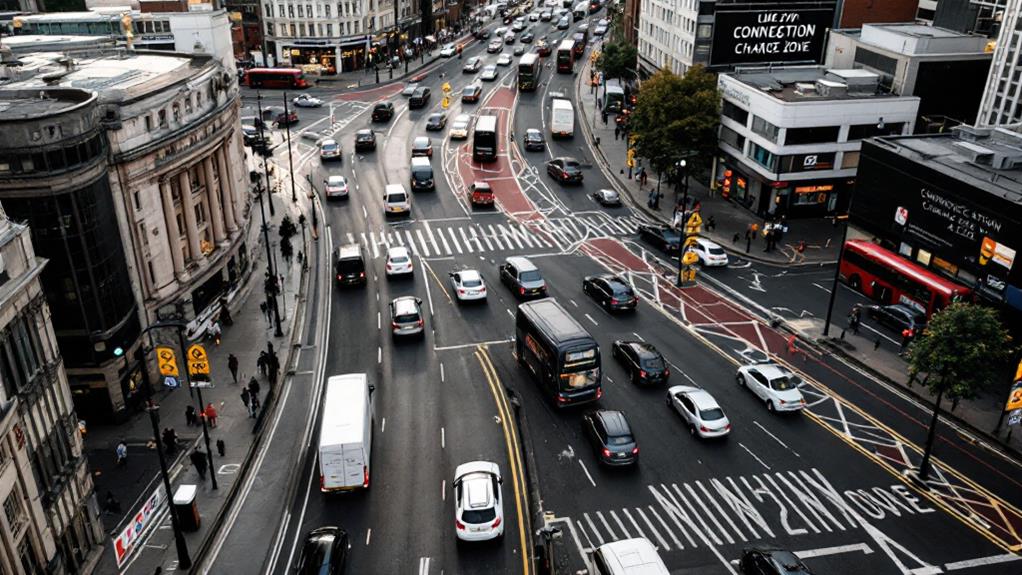
Complexity awaits you when traversing London's Congestion Charge zones. As you navigate the city's dynamic streets, you'll need to be aware of this daily fee for driving within central London. The current rate is £15 per day, but you can save £5 by paying in advance. Don't forget to settle your charge by midnight on the day of travel to avoid hefty penalties.
While parking in London already presents challenges, the Congestion Charge adds another layer of consideration. You'll need to factor this cost into your budget alongside traditional pay and display parking fees. However, some exemptions and discounts are available for specific vehicles, residents, and disabled drivers. If you qualify, make sure you have the necessary documentation.
To pay the Congestion Charge, you have several options at your disposal. You can settle online, by phone, at retail outlets, or through various mobile apps. This flexibility allows you to easily comply with the regulations. Remember, failure to pay can result in a Penalty Charge Notice of up to £160, so it's essential to stay on top of your payments when driving in central London.
Time Restrictions and Permit Requirements
Time restrictions and permit requirements often catch visitors off guard when parking near London's major attractions. You'll find that many central areas impose strict time limits on on-street parking, typically two hours or less. This means you'll need to keep a close eye on the clock and potentially move your car frequently.
Residential parking zones present another challenge. If you're hoping to park within these areas, you'll need a residential parking permit. As a tourist, obtaining one can be complex and availability is often limited. This greatly reduces your options for parking near popular sites.
Around major attractions like the Tower of London and Buckingham Palace, you'll encounter even more restrictions. Parking meters may be scarce, and those you do find might have short time limits. Be prepared to search for alternative parking options or consider public transportation.
Adding to the confusion, signage explaining parking rules isn't always clear. You might inadvertently violate regulations, risking hefty fines. To avoid these pitfalls, research parking options in advance, carefully read all signs, and consider using parking apps or websites to find suitable spots.
Alternative Transportation Options
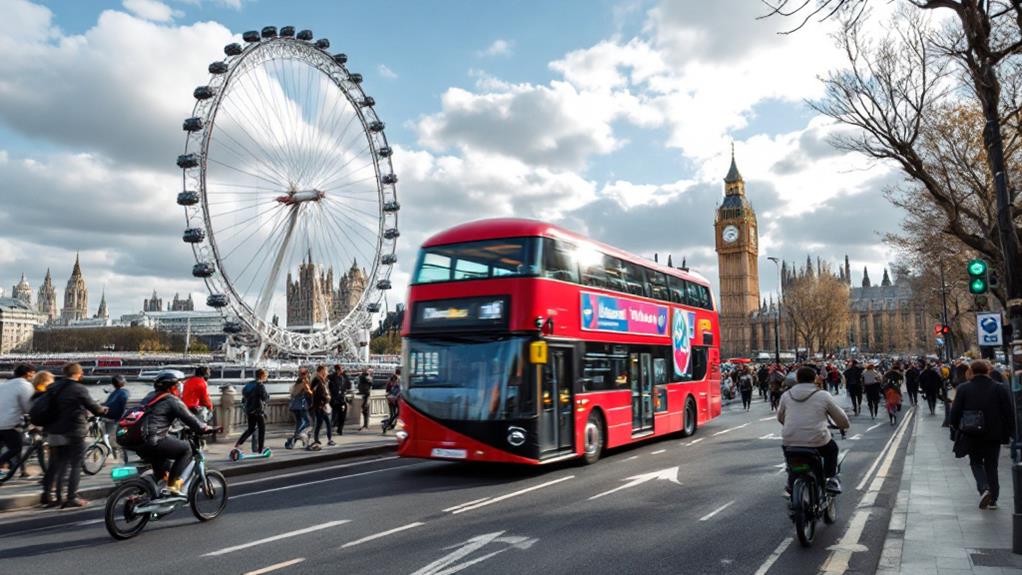
In light of the parking challenges, London offers a wealth of alternative transportation options for visitors. You'll find the city's extensive public transportation network provides convenient alternatives to driving and parking. The Underground, or Tube, along with buses, can take you to most major tourist attractions quickly and efficiently.
For a sustainable and healthy way to submerge London's sights, try the Santander Cycles bike-sharing program. You can easily rent a bike and drop it off at various locations throughout the city. If you're arriving by car, consider using park-and-ride facilities on the outskirts of London. These allow you to leave your vehicle and continue your expedition using public transport, avoiding the hassle of city center parking.
For a unique viewpoint, hop on the Thames Clipper river bus service. It's a scenic way to reach certain tourist destinations along the River Thames. If you have mobility needs, London's black cabs and minicabs offer wheelchair-accessible options. With these diverse transportation choices, you can easily navigate the city and enjoy its attractions without worrying about parking challenges.
Accessibility Concerns for Disabled Visitors
Many disabled visitors face unique challenges when traversing London's parking terrain near major tourist destinations. While designated disabled parking bays exist near popular attractions, you'll find that availability and accessibility can be limited. This scarcity often necessitates alternative transportation options, such as wheelchair-accessible taxis or public buses, to reach certain sites.
Underground parking garages and older parking areas pose particular difficulties for those with mobility issues. Many lack sufficient elevators, escalators, and other accommodations essential for disabled visitors. You'll need to research carefully to identify suitable parking locations that meet your specific needs.
If you're an international visitor with a disabled parking badge, you may encounter additional obstacles. The recognition and validity of non-UK badges can be unclear, potentially complicating your parking options. To maneuver these challenges effectively, it's vital to plan ahead and thoroughly research your parking and transportation arrangements. By doing so, you'll be better prepared to access London's major attractions and enjoy your visit, despite the accessibility concerns in many parking areas throughout the city.
Technology Solutions for Parking Woes
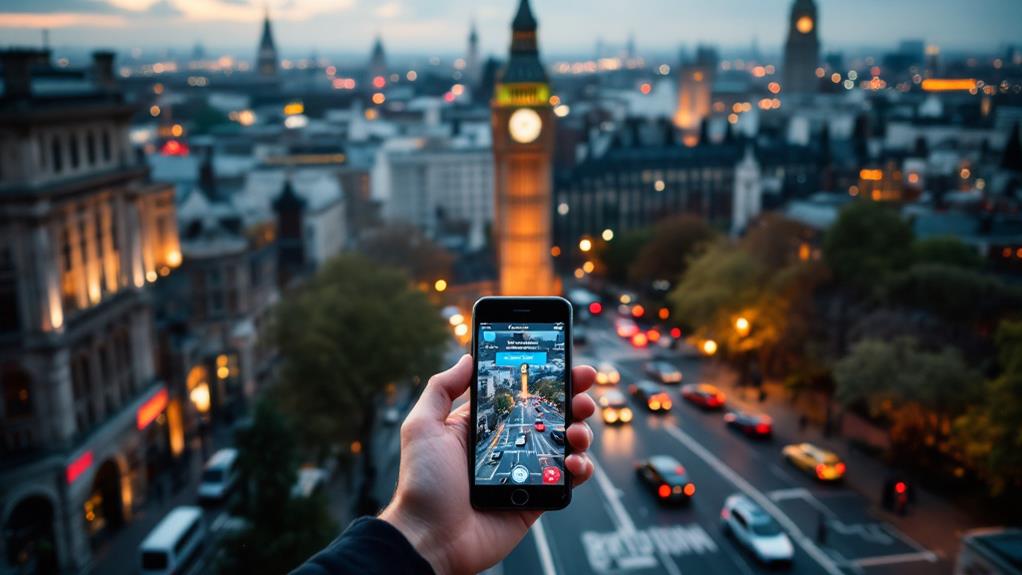
While accessibility challenges persist, technological advancements are revolutionizing parking near London's major attractions. You'll find that mobile parking apps like RingGo have altered how you find parking and pay for it. These apps allow you to park without fumbling for change or rushing back to your car when time's running out. They provide real-time updates on space availability, saving you time and frustration.
Automated parking systems are another pivotal change. Using sensors and smart algorithms, these systems optimize space usage and reduce the time you spend searching for a spot. You'll also encounter variable pricing schemes that adjust rates based on demand. This encourages you to park in less crowded areas, potentially saving money and easing congestion.
Big data analytics are working behind the scenes to predict parking patterns and bottlenecks. This allows authorities to manage resources more effectively, ensuring you're more likely to find a spot when you need one. Contactless payments and license plate recognition technologies streamline the process further, making your parking experience quicker and more convenient. These parking solutions are gradually altering the environment around London's tourist hotspots, making your visit smoother and more enjoyable.
Future Plans for Tourist Parking
Future plans for tourist parking in London are taking shape with five key initiatives. You'll soon see automated parking systems near major attractions, increasing capacity and efficiency in crowded car parks. Parking near these hotspots will become easier as dedicated coach and bus facilities are developed at strategic locations, catering to group visitors.
The city is also considering flexible pricing models to manage demand and encourage public transportation use. This means you might find parking rates fluctuating based on peak times and availability. To make parking more affordable and accessible, local authorities are partnering with private operators to expand options for visitors.
Integrated mobility solutions are on the horizon, including park-and-ride schemes and improved signage. These will enhance your parking experience and help you traverse London's complex rules and regulations more easily. As these plans unfold, you can expect a smoother, more efficient parking system that balances the needs of tourists with the city's infrastructure limitations. Keep an eye out for these changes as they're implemented, making your future visits to London's attractions more convenient and stress-free.
